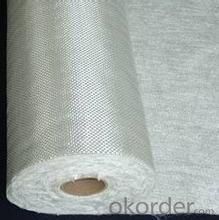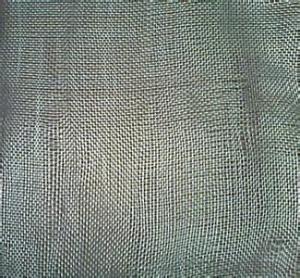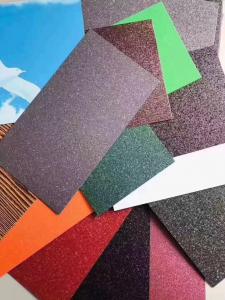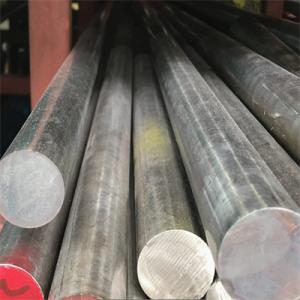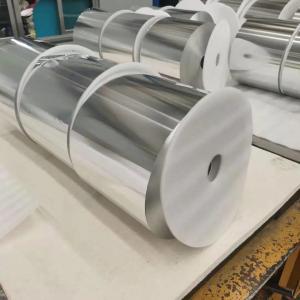Fiberglass Fabrics Silica Fiber Glass Cloth
- Loading Port:
- China Main Port
- Payment Terms:
- TT OR LC
- Min Order Qty:
- -
- Supply Capability:
- -
OKorder Service Pledge
Quality Product, Order Online Tracking, Timely Delivery
OKorder Financial Service
Credit Rating, Credit Services, Credit Purchasing
You Might Also Like
Quick Details
| Place of Origin: | Brand Name: | Model Number: | |||
| Application: | Weight: | Surface Treatment: | |||
| Width: | Weave Type: | Yarn Type: | |||
| Alkali Content: | Standing Temperature: |
Packaging & Delivery
| Packaging Detail: | 50m/carton |
| Delivery Detail: | about 20days |
Specifications
1. High silica glass fiber cloth.
2. High temperature resistance.
3. Instant working temp.: 1400C degree
- Q:Can fiberglass fabric be used for reinforcement in sporting goods?
- Yes, fiberglass fabric can be used for reinforcement in sporting goods. It is commonly used to enhance the durability, strength, and rigidity of various sporting equipment such as kayaks, surfboards, skis, and hockey sticks. The lightweight and high tensile strength properties of fiberglass make it an ideal material for reinforcing these products, improving their performance and longevity.
- Q:Can fiberglass fabrics be used for filtration purposes?
- Yes, fiberglass fabrics can be used for filtration purposes. Fiberglass fabrics are known for their high strength, durability, and resistance to chemical and thermal degradation. These properties make them suitable for various filtration applications. Fiberglass fabrics can effectively filter out particles, pollutants, and contaminants from air, liquids, and gases. They can be used in industries such as automotive, aerospace, oil and gas, chemical, and pharmaceutical, where filtration is required to ensure clean and safe environments. Additionally, fiberglass fabrics can be designed with specific pore sizes and filtration efficiencies to meet the desired filtration requirements. Overall, fiberglass fabrics offer excellent filtration capabilities and are widely used in various industries for this purpose.
- Q:Do fiberglass fabrics have any electrical conductivity properties?
- No, fiberglass fabrics do not have any electrical conductivity properties.
- Q:What are the differences between Geogrid, glass fiber network and geotextile?
- A grille is made of polypropylene, PVC polymer and thermoplastic or molded by two-dimensional grid or a certain height of the three-dimensional mesh screen, when used as a civil engineering, called geogrid. Engineering applications: highway, railway, abutment, approach road, wharf, dam, slag yard and other soft soil foundation reinforcement, retaining wall and pavement anti cracking projects, and other fields.
- Q:What is the tear strength of fiberglass fabric?
- The tear strength of fiberglass fabric varies depending on factors such as the thickness of the fabric, the type of weave, and the quality of the material. Generally, fiberglass fabric has a high tear strength due to the strong and resilient nature of the fiberglass fibers. It is known to be stronger than many other textile materials, including cotton, nylon, or polyester. However, it is important to note that tear strength can also be influenced by external factors such as temperature, exposure to chemicals or UV radiation, and the presence of any defects or damages in the fabric. Therefore, it is advisable to refer to the specific specifications provided by the manufacturer or conduct a tear strength test to determine the exact tear resistance of a particular fiberglass fabric.
- Q:Is fiberglass fabric suitable for use in architectural applications?
- Yes, fiberglass fabric is suitable for use in architectural applications. It is lightweight, durable, and resistant to weather conditions, making it a versatile material for a variety of architectural purposes such as insulation, roofing, and cladding. Additionally, fiberglass fabric can be easily molded and shaped, allowing for creative and innovative designs in architectural projects.
- Q:How is fiberglass fabric cut and shaped?
- Fiberglass fabric is typically manipulated and shaped through various techniques. One method commonly employed is the utilization of scissors or a utility knife to achieve the desired size and shape. This method is frequently employed for smaller or more intricate cuts. For larger cuts or more precise shaping, the technique known as "hot knife cutting" is often utilized. This involves the use of a heated blade or wire to neatly slice through the fiberglass fabric. The application of heat aids in sealing the fabric's edges, averting fraying and guaranteeing a sleek finish. Another technique employed for shaping fiberglass fabric involves molding. In this process, the fabric is positioned over a mold or form and an adhesive or resin is administered to secure it in place. Subsequently, the fabric is allowed to cure or harden, acquiring the mold's shape. This method is commonly employed in the manufacturing of fiberglass products such as boat hulls or automotive parts. In conclusion, the precise cutting and shaping of fiberglass fabric necessitates careful attention to detail. Whether employing scissors, a hot knife, or molding techniques, it is imperative to achieve clean cuts and proper shaping in order to attain the desired outcome.
- Q:Can fiberglass fabric be used for electrical cables?
- Indeed, electrical cables can make use of fiberglass fabric. Renowned for its exceptional electrical insulation capabilities, fiberglass fabric is well-suited for scenarios necessitating the reduction of electrical conductivity. It can serve as a protective outer layer or insulation within electrical cables, effectively safeguarding against electrical shocks and short circuits. Moreover, fiberglass fabric's resistance to heat, fire, and chemicals amplifies its suitability for electrical cable applications.
- Q:How is fiberglass fabric used in the production of protective gloves?
- Fiberglass fabric is used in the production of protective gloves as it provides excellent heat resistance and insulation properties. It is often used as a lining material in gloves to protect the wearer from extreme temperatures and potential burns. The fiberglass fabric acts as a barrier, preventing heat transfer and ensuring the safety of the user. Additionally, fiberglass fabric is lightweight and flexible, allowing for comfortable and dexterous glove designs.
- Q:How does fiberglass fabric perform in high-temperature environments?
- Fiberglass fabric performs well in high-temperature environments due to its excellent heat resistance properties. It can withstand temperatures up to 1000°F (540°C) without significantly degrading or melting. This makes it a suitable material for various applications such as insulation, fireproofing, and protective clothing in industries where high temperatures are present.
1. Manufacturer Overview |
|
|---|---|
| Location | |
| Year Established | |
| Annual Output Value | |
| Main Markets | |
| Company Certifications | |
2. Manufacturer Certificates |
|
|---|---|
| a) Certification Name | |
| Range | |
| Reference | |
| Validity Period | |
3. Manufacturer Capability |
|
|---|---|
| a)Trade Capacity | |
| Nearest Port | |
| Export Percentage | |
| No.of Employees in Trade Department | |
| Language Spoken: | |
| b)Factory Information | |
| Factory Size: | |
| No. of Production Lines | |
| Contract Manufacturing | |
| Product Price Range | |
Send your message to us
Fiberglass Fabrics Silica Fiber Glass Cloth
- Loading Port:
- China Main Port
- Payment Terms:
- TT OR LC
- Min Order Qty:
- -
- Supply Capability:
- -
Offcanvas right
...
OKorder Service Pledge
Quality Product, Order Online Tracking, Timely Delivery
OKorder Financial Service
Credit Rating, Credit Services, Credit Purchasing
Similar products
New products
Hot products
Hot Searches
Related keywords

